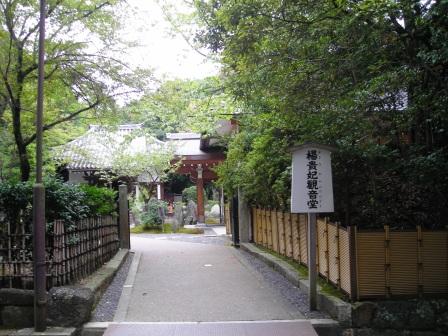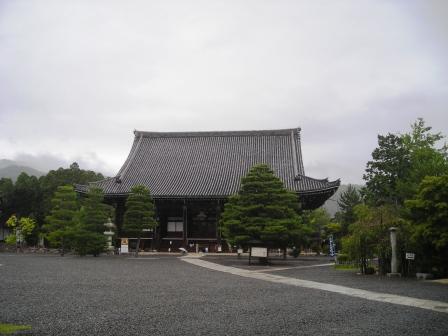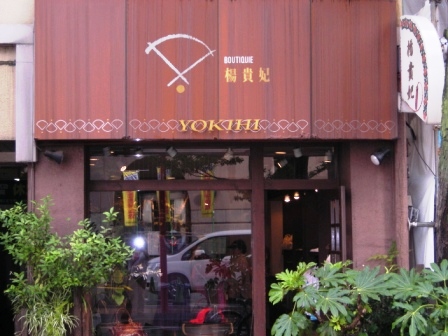Kinwashi Tour Japan Thread
-
Dream Festival wind chimes in the affected areas in Hainan Air 届Ketai Wakayama

 Wind chimes on display in the lobby of Hainan station. = 1 pm on the strip had been written down and Haiku Senryu submitted from around the country, Kainan, Wakayama, Megumi Ito, Rina shot
Wind chimes on display in the lobby of Hainan station. = 1 pm on the strip had been written down and Haiku Senryu submitted from around the country, Kainan, Wakayama, Megumi Ito, Rina shotCool on a street corner called "I Dream Festival wind chimes Bunch" are held in the Wakayama Prefecture Kainan. Wind chimes made of glass (10 cm diameter) suspended at 12 does not shrines, such as Hainan JR Station and about 2,000 pieces, which sounded a cool sound. The wind chimes on one by one, were marked with strips and wrote a humorous poem pray for the recovery of messages submitted through the Internet from all over the affected areas. 15th festival.
Chamber of Commerce and inspired by the events that wind chimes to decorate the Kasuga Shrine in the city every summer, held from last year as a PR event for local products Kishu lacquerware. According to the festival, produced a wind chime with a shiny colors such as lacquer
-
[Osaka], born nostalgic taste tenement
 Plain Donut price $ 1.00 (tax included) ※ Click the picture to enlargepictures
Plain Donut price $ 1.00 (tax included) ※ Click the picture to enlargepicturesThis light but I was fried. Slightly sweet, good mouth my way. One can either ã�„ã�Ÿã� ã��ã�¾ã�™. Bring out the sweetness of a blend of four types of domestic wheat, oil and rice from Wakayama å�–Ri寄Seru hesitation. Into a little rich even with soy milk. Hyakka (Yakkaryouran days) in the donut of the boom's straightforward approach with nostalgic flavor and appearance. Flour, including six in a chocolate ring, try the first plane.
I was a salaried worker Tomohiro Takahashi (38) longing to own brand, built 100 years will soon ç©ºå € Osaka (from digging) issued a goodwill wooden row house two years ago. "Want to be loved as ordinary ç©ºå € donut shop," said overlapping daily devotion. (Tomoko Sogo)
100 Clover Lane Donuts ★ yen (tax included) Phone 06.6764.0968 closed Wednesday for a 6-cho, Chuo-ku, Osaka Wawu
-
Nebuta festival carries hope for disaster-affected Tohoku
BY SHIHO KUMADA STAFF WRITER
 Flashy Nebuta floats go on parade in downtown Aomori on Aug. 2. (Masaru Komiyaji)
Flashy Nebuta floats go on parade in downtown Aomori on Aug. 2. (Masaru Komiyaji)AOMORI - The Aomori Nebuta Festival, one of the three major festivals in the disaster-affected Tohoku region, kicked off on Aug. 2, carrying people's hope for a quick return to normalcy in the region nearly five months after the Great East Japan Earthquake .
Fifteen huge light-radiating Nebuta floats with various themes paraded along major roads in Aomori. Banners were hanging on the side of the floats, saying "Keppare Tohoku (Hang in there, Tohoku)."
The event will run until Aug. 7.
The Nebuta float, made of paper and wires, can be 5 meters tall, 9 meters wide and 7 meters long at the maximum. The floats traverse a 3-kilometer course in central Aomori.
Participants wearing specially designed yukata and straw hats with tiny bells attached to them, follow the procession of floats hopping along the way.
The festival began around 7 pm as the floats' illuminations were lit and music started with Japanese flutes and drums, filling the entire city with a festive air.
However, the number of pay festival-viewing seats was cut about 10 percent from last year's event because ripples from the quake continued to be felt in the prefecture.
-
Express "Kuroshio" published in July 2007 JR West introduced new vehicle
JR West 4th, Kyoto and Wakayama Nanki Express connects areas "Kuroshio" of new vehicles unveiled to the press. Both production and 51 introduced from July next year.
Osaka - Express was launched in March between Kinosaki Onsen "Stork" same as new vehicle for "287 series". Incorporates a body structure that absorbs collision impact, multi-purpose room and subjected to barrier-free to use, such as nursing. The body side is placed a line of ocean inspired colors of sea green.
-
Yang Gui Fei, �贵妃 as Yokihi
Yang Gui Fei, �贵妃, or Lady Yang was the consort of Tang Emperor who was forced to commit suicide during a mutiny in 756 CE.
In Japan, Yang Gui Fei, is known as Yokihi. The Japanese believed that Lady Yang did not die in Mawei but had escape to Japan. One version claimed that she arrived by sea at Yamaguchi, 山�县, and died shortly afterwards. There is also a Lady Yang tomb in where the Japanese believed she was buried. Other versions claimed that Lady Yang participated in Japanese court life and even helped to suppress Japanese palace coups.
In 2002, the popular Japanese star, Yamaguchi Momoe, å±±å�£ç™¾æƒ claimed that she was a descendent of Lady Yang.
In Kyoto, there are two temples related to Lady Yang.
When the Tang court ended the An Lu Shan rebellion, 安�之乱, Emperor Tang Ming Huang had already abdicated in favor of his son. When he returned to Chang an, Tang Ming Huang missed Lady Yang and had heard about her death in Japan. He instructed a general to send two Buddhist sculptures to the temple where she was buried.
The General arrived in Japan but left the sculpture in another temple, Seiryoji, 清凉寺, in Kyoto. When the other temple heard about the incident, the two temples began negotiating about the two sculptures and even had to involve the Japanese Imperial Court.
In another temple Sennyoji, 泉涌寺, in Kyoto, they claimed to have a sculpture of Lady Yang as a guan yin, �贵妃观音. This sculpture is now classified as a national treasure.
So did Lady Yang Gui Fei die at Mawei 马嵬�or did she escape to Japan?
Most of the modern day theories regarding her escape to Japan were based on analysis and creative interpretation of Bai Juyi’s Song of Eternal Sorrow, é•¿æ�¨æŒ.
Rumors of Lady Yang’s escape were believed to have been circulating in Tang China so Bai Juyi’s poem could have been inspired by these rumors. On the other hand, historians also believed that Bai Juyi used Lady Yang and Tang Ming Huang’s love story as a backdrop for his own love tragedy.
The popularity of Lady Yang’s story in Japan is certainly related to the popularity of Bai Juyi’s poems during a period when Chinese culture was transmitted to Japan. Lady Yang’s story is believed to have inspired part of the famous Japanese novel Tale of Genji
There is almost no way to prove conclusively if Lady Yang died in Mawei or escaped to Japan. What is certain is how her tragic love story continues to capture people’s imagination for more than a thousand years. Maybe it shows a fascination for the lifestyle and love affairs of the “rich and famous”.
Related articles:
Yang Gui Fei, �贵妃
Sennyu Ji, 泉涌寺, Kyoto
History page

Japan main page
Tang Dynasty
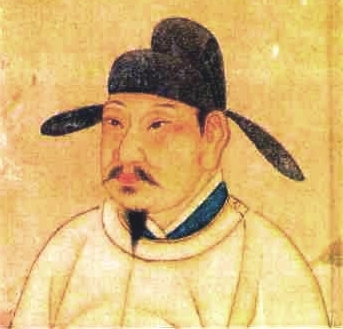
Tang Ming Huang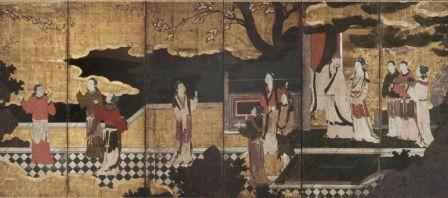
Japanese paining of Tang Ming Huang and Yokihi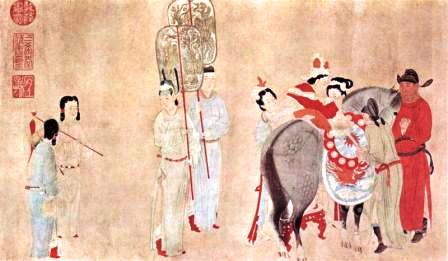
Yang Gui Fei surrounded by attendants
Entrance to Yokihi Kannon-do hall, æ�¨è´µå¦ƒè§‚éŸ³å ‚
Seiryoji, 清凉寺, in Kyoto
Yokihi boutique in Yokohama -
Scientist on mission to prove grass can be greener
BY MISUZU SATO STAFF WRITER
 An experiment on cutting grass deeply as opposed to removing from the roots is conducted in Koriyama, Fukushima Prefecture. (Kengo Hiyoshi)
An experiment on cutting grass deeply as opposed to removing from the roots is conducted in Koriyama, Fukushima Prefecture. (Kengo Hiyoshi)KORIYAMA, Fukushima Prefecture - Mention grass to scientist Mitsuo Kondo and he gets excited.
On Aug. 4, the professor at Tokyo University of Agriculture conducted an experiment to decontaminate irradiated grass in Fukushima Prefecture.
Kondo used Ose Park in Koriyama, about 60 kilometers east of the stricken Fukushima No. 1 nuclear power plant, for the experiment.
Kondo's method involves mowing grass so deeply that the roots are barely spared.
His effort is part of the prefectural government's campaign to mitigate the impact of radiation on people's lives.
First, radiation levels were measured in the 160-meter-square area picked for the experiment. Then the grass was mowed deeper than usual.
Kondo said the "deep-mowing" method should lower radiation levels to one-third of the level before cutting.
He said he will continue to try to come up with better ideas to preserve sites with grass while at the same time decontaminating those areas.
-
[What] was 最高Yan 何Hanakutomo

 Number plates aligned to business Naniwa Naniwa Osaka Private Association of Automobile Association. The Medium ", 728", Suminoe-ku, Osaka-even numbers, Tomonori Nakazato shooting
Number plates aligned to business Naniwa Naniwa Osaka Private Association of Automobile Association. The Medium ", 728", Suminoe-ku, Osaka-even numbers, Tomonori Nakazato shootingFriend moved to Osaka to meet college from Yokohama. I saw her car, involuntarily, "Wow, I do!". License plate that is unfamiliar, "and each exposure, cracks" and was giving it an air Kowamote.Such was the impact the childhood gone to another world. Decades since then. Is considerably familiar, wonder remains. What number, Toka Toka Kobe, Hiroshima, would the government name.What this feels a nuance. "Osaka" in Osaka city, the city is "not anything." Hiragana yet.
First of all, where the Chinese went to? The Kojien the "Naniwa Naniwa Naniwa. Designation of Osaka and its vicinity." Japanese classical literature and the flip scheme, in Chronicles, "Ben (speed), Kishio (wave) that has weight (Hana) Cuda (Hayate) 會 to come (a) Hinu. Name ( Dzu) national Naniwa The only (country of the wave velocity) and vinegar. also (again), Lang (Namihaya a) Date and (b) off. Now, Namba (what is) the so-called and (b) Fu lead (a weft you) and that "something.The Na'er Manyoshu wave, the wave is also referred Nai'er. Old, already messy state. "Naniwa is" caught at the water "meaning" and, if the theory Ainu scholars argue, "Waiting for the Sun (Pine) refers to a sacred place Tsudzumatta Naruhiha the Ru" to describe the Korean! I have come to the end, �明Rashii etymology. Nevertheless the first time in this establishment. Amazing.
In the number Naniwa. 1983 debut and surprisingly young. Izumi in Osaka Prefecture and Osaka, it was two, more cars, across both the Osaka "independent" to be. In doing so, claiming what was discussed several. Principle that as the registered office location, "Suminoe". But "On behalf of the Osaka Tehen. Complaints come from other districts," opposition. "Ointment" is "may not represent the community", "Mido" and "the most complex strokes," and dismissed. After all, "I name across the country through. Many Chinese characters," and because "what was" decided. Hiragana was the birth of a rare number plates and non-existent municipal name. "感Jiyashi containing all stand anything else." Mr. Osamu Iwamoto 近畿�輸局 Ministry (55) laugh.
To town, many "what was" full of. "The flowers used bookstore Gikkonbattan wave" venerable old books published last summer the owner, Mr. Kenichi Sakamoto (88), "The ground has a sense of stability, glamorous look" so "flower wave" is selected. "And dance forever and that makes you feel small towns and from Lang Lang in the Once you live." The mall tavern muscle Tenjinbashi "eight hundred twenty-seven" is Ayakatta manager's birthday. "The parents" Osaka "Koch from the cafeteria and decided to kiss Naniwa". "Gathering of Naniwa word," says Masaaki Nakai Honorary Advisor (78), the number of car in the desired number system ", 728" was. "From pride and Naniwa"
If you write Naniwa, "浪花節" somewhat tinged with kindness, as if you write Naniwa and feel the outpouring of the three Kameda brothers and sweat like Akai Hidekazu. And if you write and Naniwa, "Naniwa finance road", such as squid will take Totanni. But how to write a Eeyan.Somehow, I �Ware. But this is fuzzy, and really, Osaka. Anyway, anything's a Naniwa Naniwa.(Sonoko Miyazaki)
Note
Naniwa-ku Osaka, July 28, the last four years, "Day of Naniwa" enacted. Various events have been deployed around this date. See website (http://www.city.osaka.lg.jp/naniwa/)
â– Recommendation
Hitomi Yaida singer-songwriter (32)
In the strong women in Yattaru
July 28 birthday, was born and raised in Osaka in Osaka. Naniwa Naniwa-born is a girl. My job is going to various local woman Naniwa is really powerful. In particular, when the pinch and adversity can overcome the power of laughter, "I Yattaro alrighty" and felt himself get in front, Naniwa unique. I would soon be discovered in-depth questions and contradictions, where a strong woman Naniwa. I also Naniwa woman in power, we swam a strong l
-
Beauty sore to compete in Osaka only "Queen of Beer Selection Committee"
Four days in the hole in the basement of the New World Tsutenkaku Osaka competing for the annual summer sore beautiful beer drinking, "Queen of Beer Selection Committee" was held.
Approximately 90 people attended from the local business woman. 10 people survived the preliminaries, good energy and greeting, smiling after 飲Mi干Shita appealed.
Sakai company employee, Mr. Sunny Cai Forest (27) consecutive victories for the first time. Get the fans' power-saving 乗Ri切Rou summer beer, "exclaimed. "Power-saving work in a sweat, thanks to the increasing amount of drink"
-
source
Wild Images, a division of Birdquest, specializes in wildlife photographic tours worldwide. Wild Images' exciting programme of tours includes both group and individual departures, and features such destinations as Hungary, Spitsbergen, Tanzania (Serengeti & Ngorongoro), India, Japan, Baja California, the Galapagos, Antarctica, South Georgia & The Falklands and the Subantarctic Islands of New Zealand & Australia. Click on the picture above to visit the Wild Images website.
Fairy Pitta, Japan

Our 2009 Japan summer tour was once again great fun, with just about all of the hoped for specialities showing very well, including the stunning Fairy Pitta, one of our favourites. The following pictures are effectively a photo-diary of the tour (Pete Morris)
Japanese Reed Bunting, Japan

We began close to Narita (Tokyo) where the rich reedbeds are home to Japanese Reed Bunting (Pete Morris)
Japanese Marsh Warbler, Japan

... and the rare Japanese Marsh Warbler (Pete Morris)
Chestnut-eared Bunting, Japan

Moving on to Karuizawa (by bullet train!) we visited some abandoned paddyfields where we found Chestnut-eared Bunting (Pete Morris)
Japanese Snipe, Japan

... some very obliging Japanese (or Latham's) Snipe (Pete Morris)
Green Pheasant, Japan

... and the superb endemic Green Pheasant (Pete Morris)
Ural Owl, Japan

Nearby we found our first Ural Owl, a species that remarkably kept finding us during the tour! (Pete Morris)
Copper Pheasant, Japan

The forests of Karuizawa revealed their best kept secret, the often elusive Copper Pheasant, a species that unusually we saw several times during the tour! (Pete Morris)
Blue-and-white Flycatcher, Japan

Other goodies here included the sweetly singing Blue-and-white Flycatcher (Pete Morris)
Narcissus Flycatcher, Japan

... the amazingly colourful Narcissus Flycatcher (Pete Morris)
-
Japanese Yellow Bunting, Japan

... the rare Japanese Yellow Bunting (Pete Morris)
Japanese Thrush, Japan

... and several Japanese Thrushes, including this unusually obliging individual (Pete Morris)

Japanese Accentor, Japan

Here we found the much-wanted Japanese Accentor (Pete Morris)
Japanese Green Woodpecker, Japan

In the forests that flank Mount Fuji we found many other wanted species such as Japanese Green Woodpecker (Pete Morris)
Siberian Blue Robin, Japan

... this unusually obliging Siberian Blue Robin (Pete Morris)
Spotted Nutcracker, Japan

... and a rather inquisitive Spotted Nutcracker (Pete Morris)
Ijima's Warbler, Japan

We then took a ferry to Miyake-jima in the Izu Islands, where breeding endemics included Ijima's Warbler (Pete Morris)
Izu Islands Thrush, Japan

... the striking Izu Islands Thrush (Pete Morris)
-
Owston's Tit, Japan

... and the chunky Owston's (or Izu) Tit (formerly lumped in Varied Tit) (Pete Morris)
Japanese Woodpigeon, Japan

Other localized specialities included the large and vocal Japanese Woodpigeon (Pete Morris)
Styan's Grasshopper Warbler, Japan

... the stout Styan's Grasshopper Warbler which is a small island specialist (Pete Morris)
Japanese Robin, Japan

... and the local form of Japanese Robin (Pete Morris)
Northern Boobook, Japan

At night we found Northern Boobooks to be pretty common (Pete Morris)
Fairy Pitta, Japan

We then headed south to Kyushu, and the wonderful Mi-ike, where we quickly secured our main target, the fantastic Fairy Pitta (Pete Morris)
Ruddy Kingfisher, Japan

We were also delighted to see some very obliging Ruddy Kingfishers (Pete Morris)
White-backed Woodpecker, Japan

... and some smart White-backed Woodpeckers (Pete Morris)
Meadow Bunting, Japan

Nearby open areas were also good for the colourful Meadow Bunting (Pete Morris)
Amami Woodcock, Japan

We then moved into the Ryukyu chain where we first visited Amami, and wasted no time in finding the excellent Amami Woodcock (Pete Morris)
-
mami Woodpecker, Japan

We soon cleaned up on the island, even seeing the elusive endemic Amami Thrush. More obliging were the Amami Woodpeckers, surely a good split from White-backed? (Pete Morris)
Amami Robin, Japan

The superb Amami Robin (one of the two forms of Ryukyu Robin) showed brilliantly and we were able to compare the plumage and voice with the very different Okinawa (Ryukyu) Robin later in the tour (Pete Morris)
Lidth's Jay, Japan

The superb Lidth's Jay also showed brilliantly (Pete Morris)
Habu, Japan

A party of jays evel led us to the deadly Habu, Japan's most deadly snake (Pete Morris)
Amami Black Rabbit, Japan

We also went spotlighting for the endemic Amami Black Rabbit (Pete Morris)
Black-faced Spoonbill, Japan

We then moved further south to Ishigaki-jima, and here, one of the surprises of the tour was having our first of several opportunities to see the endangered Black-faced Spoonbill (Pete Morris)
Black-faced Spoonbill, Japan

... another view of one of the five Black-faced Spoonbills we saw (Pete Morris)
Ryukyu Scops Owl, Japan

After several unsuccessful attempts, we finally located a Ryukyu Scops Owl at its roost (Pete Morris)
Malayan Night Heron, Japan

Other goodies on Ishigaki-jima included Malayan Night Heron (Pete Morris)
Ryukyu Serpent Eagle, Japan

... the endemic Ryukyu Serpent-Eagle (Pete Morris)
-
Ishigaki Tit, Japan

... the endemic Ishigaki Tit (this amazing endemic form is sometimes lumped in Great Tit, Japanese Tit or Cinereous Tit but surely merits specific status) (Pete Morris)
Large-billed Crow, Japan

... the tiny local osai form of Large-billed Crow - another potential split (Pete Morris)
Ryukyu Green Pigeon, Japan

The uncommon Ryukyu Green Pigeon (formerly lumped in Taiwan Green Pigeon as Whistling Green Pigeon) (Pete Morris)
Ryukyu Minivet, Japan

... and the distinctive Ryukyu Minivet (Pete Morris)
Violet Dropwing, Japan

A spot of dragonfly watching produced some stunning Violet Dropwings (Pete Morris)
Okinawa Rail, Japan

Our last island on the main tour was Okinawa where we wasted no time in locating our bird of the trip, the superb Okinawa Rail (Pete Morris)
Okinawa Woodpecker, Japan

Several Okinawa (or Pryer's) Woodpeckers also obliged (though not too well for the camera!) (Pete Morris)
Roseate Tern, Japan

Having made a clean-sweep of Ryukyu endemics, we took some time out to admire the stunning Roseate Terns (Pete Morris)
Roseate Tern, Japan

100s of Roseate Terns fished in front of us (Pete Morris)
Roseate Tern, Japan

... and other Roseate Terns flew around calling (Pete Morris)
-
Black-naped Tern, Japan

They were also joined by Black-naped Terns (Pete Morris)
Black-naped Tern, Japan

... another Black-naped Tern (Pete Morris)
Common Tern, Japan

... and a few longipennis Common Terns (Pete Morris)

The group on Okinawa after our successful Okinawa Rail encounters! (Pete Morris)
Japanese Robin, Japan

Our time on Hokkaido began in the rich forests in the centre of the island where we enjoyed treasures such as the nominate form of Japanese Robin (Pete Morris)
Black Woodpecker, Japan

... the impressive Black Woodpecker (Pete Morris)
Hazel Grouse, Japan

... some superb Hazel Grouse (Pete Morris)
Brown Thrush, Japan

... and the localized Brown Thrush (Pete Morris)
Mandarin Duck, Japan

On wetlands we found goodies such as Mandarin Duck (Pete Morris)
Falcated Duck, Japan

... and the attractive Falcated Duck (Pete Morris)
-
Grey Heron, Japan

... while this Grey Heron had found a new mode of transport! (Pete Morris)
Long-tailed Rosefinch, Japan

Nearby scrub held the delightful Long-tailed Rosefinch (Pete Morris)
Siberian Rubythroat, Japan

... as well as the simply amazing Siberian Rubythroat (Pete Morris)
Russet Sparrow, Japan

... and a few Russet Sparrows (Pete Morris)
Spectacled Guillemot, Japan

Moving to the coast, we found good numbers of summer-plumaged Spectacled Guillemots (Pete Morris)
Temminck's Cormorant, Japan

... as well as Temminck's Cormorants (Pete Morris)
White-tailed Eagle, Japan

... and several White-tailed Eagles, including this one on the nest (Pete Morris)
Black-eared Kite, Japan

Black-eared Kites seemed to be everywhere (Pete Morris)
Blakiston's Fish Owl, Japan

Our time in Rausu was once again a brilliant success as we feasted our eyes on the incomparable Blakiston's Fish Owls (Pete Morris)
Japanese Buzzard, Japan

Nearby, other species entertained, such as Japanese Buzzard (Pete Morris)
-
Black-faced Bunting, Japan

... Black-faced Bunting (Pete Morris)
Grey Bunting, Japan

... and, after much searching, the difficult Grey Bunting (Pete Morris)
Northern Red-flanked Bluetail, Japan

Attractive Northern Red-flanked Bluetails also put in another appearance (Pete Morris)
Gray's Grasshopper Warbler, Japan

We finished our tour in the southeast of Hokkaido, around the Nemuro Peninsula. It was a fitting climax, and here we admired more specialities such as Gray's Grasshopper Warbler (Pete Morris)
Japanese Crane, Japan

... the endangered Japanese Crane (Pete Morris)
Lanceolated Warbler, Japan

... some simply brilliant Lanceolated Warblers (Pete Morris)
Middendorff's Grasshopper Warbler, Japan

... some smart Middendorff's Grasshopper Warblers (Pete Morris)
Black-browed Reed Warbler, Japan

... and some very obliging Black-browed Reed Warblers (Pete Morris)
Eurasian Oystercatcher, Japan

Waders were not common, but included the uncommon and localized osculans form of Eurasian Oystercatcher (Pete Morris)
Far Eastern Curlew, Japan

... and some long-billed Far Eastern Curlews (Pete Morris)
-
Ishigaki Tit, Japan

The very different looking endemic 'Great Tit' on Ishigaki Island in the southern Ryukyus. Surely this is not the same species as the bird below! It has virtually no wingbars, no green in the mantle, no pale nape area, dingy underparts and a reduced white cheek! Not only that, but it sounds different...(Pete Morris)
Japanese Tit, Japan

Japanese Tit, Karuizawa, Japan. Part of the 'minor' group which is often split from Great Tit as Japanese Tit. How can this and the Ishigaki Tit be the same species!
Ishigaki Tit, Japan

Another view of the Ishigaki Tit taken on Ishigaki-jima in June 2007 (Pete Morris)
Bonin Honeyeater, Japan

Our first visit to the Bonin Islands in June 2007 was a great success. The endemic Bonin Honeyeater (now known to be a white-eye!) was common and seabirding on the way and on the way back was superb! (Pete Morris)
Bonin Honeyeater, Japan

Another view of the Bonin Honeyeater (Pete Morris)
Bonin Petrel, Japan

We had some great seawatching during the passage to the Bonin Islands during the optional extension. Bonin Petrels were common and often quite close to the boat. Photography was not easy though as the boat was effectively a huge hotel moving at 45km/h! (Pete Morris)
Matsudiara's Storm-Petrel, Japan

The rarely seen Matsudaira's Storm-Petrel photographed on the way to the Bonin Islands, June 2007 (Pete Morris)
Bulwer's Petrel, Japan

Bulwer's Petrel photographed on the way to the Bonin Islands, Japan, June 2007
Owston's Tit, Japan

One of several of the endemic forms surely worthy of specific status is Owston's Tit, the very different Izu Island form of Varied Tit
Okinawa Woodpecker, Japan

This male Okinawa (or Pryer's) Woodpecker is just one of a few hundred left and was photographed during our summer 2007 tour (Pete Morris)
-
Okinawa Woodpecker, Japan

Okinawa (or Pryer's) Woodpecker. This is the female of this rare endemic taken in northern Okinawa, June 2007 (Pete Morris)
Ryukyu Serpent Eagle, Japan

The extremely localized Ryukyu Serpent Eagle was seen very well on Ishigaki-jima (Pete Morris)
Ryukyu Scops Owl, Japan

This inquisitive Ryukyu Scops Owl on Okinawa was one of many seen on the Japan 2007 tour (Pete Morris)
Styan's Grasshopper Warbler, Japan

Japan is a great tour for Locustella warblers. This Styan's Grasshopper Warbler was photographed on Miyake-jima at the end of our tour. It was formerly lumped with Middendorff's (below) but has a far heavier bill (Pete Morris)
Middendorff's Grasshopper Warbler, Japan

This Middendorff's Grasshopper Warbler was one of several seen well on Hokkaido (Pete Morris)
Blakiston's Fish Owl, Japan

This Blakiston's Fish Owl posed for us during the Hokkaido extension (Pete Morris)
Hazel Grouse, Japan

This very obliging male Hazel Grouse showed very well during the Hokkaido extension (Pete Morris)
Siberian Rubythroat, Japan

A brilliant male Siberian Rubythroat seen on our summer tour to Japan in June 2007 (Pete Morris)
Amami Woodcock, Japan

These two Amami Woodcocks, seen on the recent Japan summer tour, were both in strangely similar poses!
Amami Woodcock, Japan

Amami Woodcock (Pete Morris)
-
Sheep "mowing" Izumi's river 10 years, residents care

 Month = 3 local residents to take care of two horses and sheep, Uchida-cho, Izumi, Osaka Prefecture offer
Month = 3 local residents to take care of two horses and sheep, Uchida-cho, Izumi, Osaka Prefecture offerThe river flows through the city of Izumi in Osaka �尾� that sheep raising two local residents.Osaka owner of the sheep. To reduce the rubbish thrown away in the shadow of the unlimited growth of the grass "about mowing" was bred as a celebrated 10 years this summer. In addition to weeding cost savings, there is now a valuable exchange of local residents to play a part.
The name of the sheep and Tatchi Utchi. In the town is named after the neighborhood association to take care Uchida, become 2nd and 3rd respectively in the second generation. Head 2 is about 1500 square meters of river in the fence enclosed, 7:00 am to 5:00 pm daily grazing leisurely.
Sheep farming in August 2002. Cultivation of flowers and a river clean and public participation in "Adopt River" is part of the business to take advantage of a rare nationally sheep. A government sheep "furniture" to buy as it takes to pay 300,000 yen in health care. Neighborhood association to take care of sheep to cooperate.
The amount of the two dogs eat grass to 11 tons per year. Weed riverbed before grazing was so tall people are being kept hidden as much as the ankle in the activity of the Lambs. I also lost the illegal dumping of household trash and appliances, alternative herbicides have been borne by the government (125 million yen a year) and trash removal expenses (300,000 yen same) that could save.
-
Buddha's, the annual "wipe your body," Nara Todaiji
Great Buddha of Todaiji - Video - "wipe your body" / Nara
 = 7 yesterday morning monks and laity of Buddha Dust with a broom and duster, Todaiji Temple in Nara, Kenta muscle taken
= 7 yesterday morning monks and laity of Buddha Dust with a broom and duster, Todaiji Temple in Nara, Kenta muscle taken7 days at Todaiji Temple in Nara, once a year, Buddha (15 meters high), cleanse the body, "you wiped himself," there is. People with a dust cloth or duster 150 monks dressed in white clothing, such as polished ride by gondola suspended from the ceiling.
This day in Nara hot day with temperatures exceeding 30 degrees for six consecutive days.Buddhist monks after å–¶Nda to pull the soul of the Buddha, the tourists looked on, and West Palm of Buddha with hair becomes sweaty (Hozu et al) (hair) went down like dust.
-

-
The above picture.
source.
Umibudo is a seaweed called green caviar or sea grape kept in Okinawa deep seawater. This seaweed grow only to Okinawa and is a healthy food from Okinawa Island. They are also known as sea grapes and eaten in Okinawa. Before serving, they should be lightly washed (to remove the sea water) and then soaked a couple of minutes in room temperature. Umi budo is eaten raw and dip in any sauce you like. A popular way is to use soy sauce and wazabi as you would do with sushis. It can also be added on top of a salada making it an original dishe. Important : Do not keep in fridge.
-
Okinawa Sea Grapes.
-
Some grapes.





